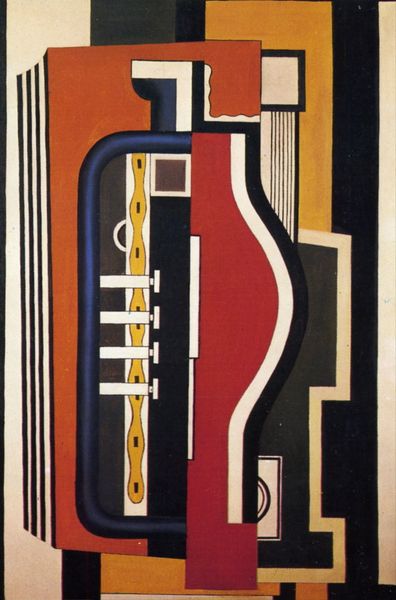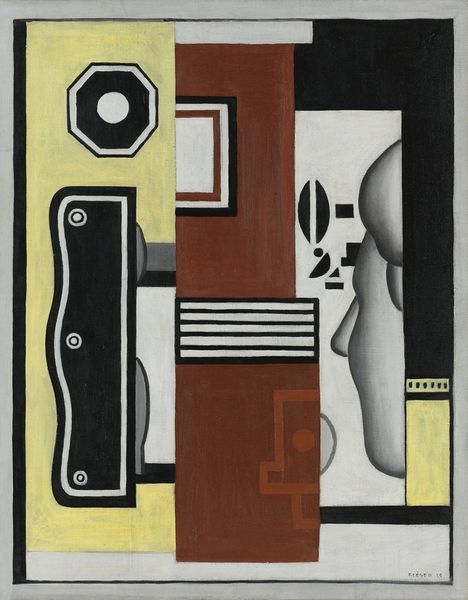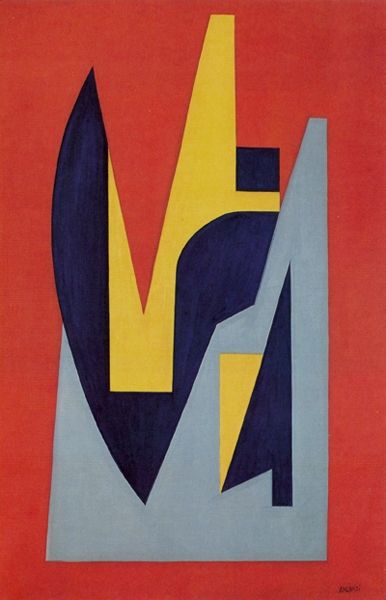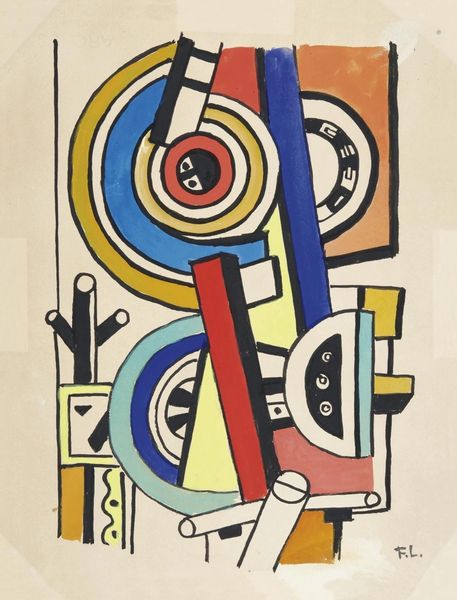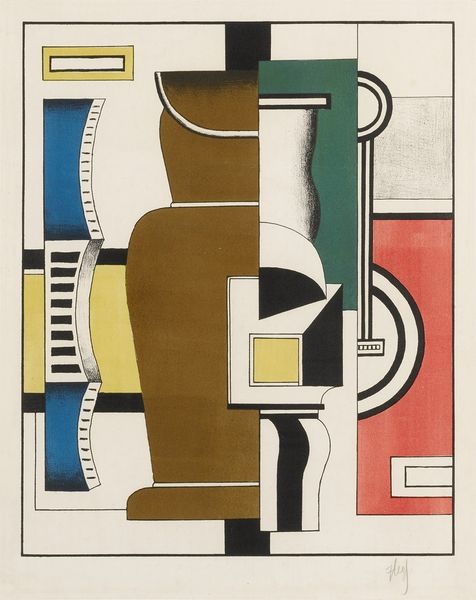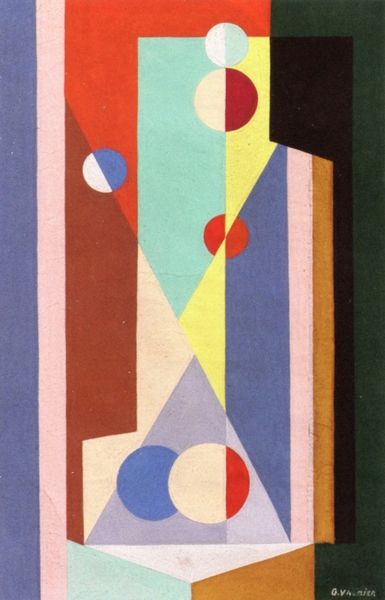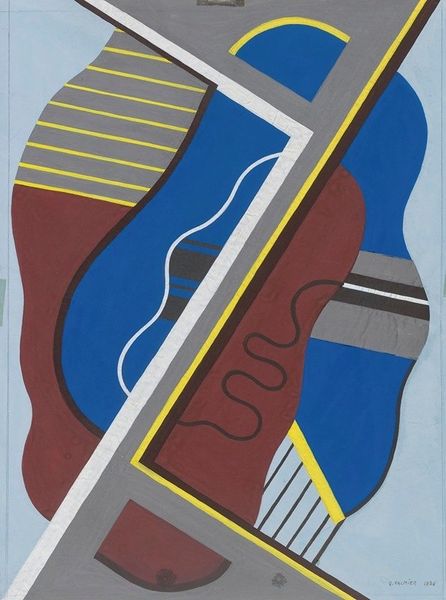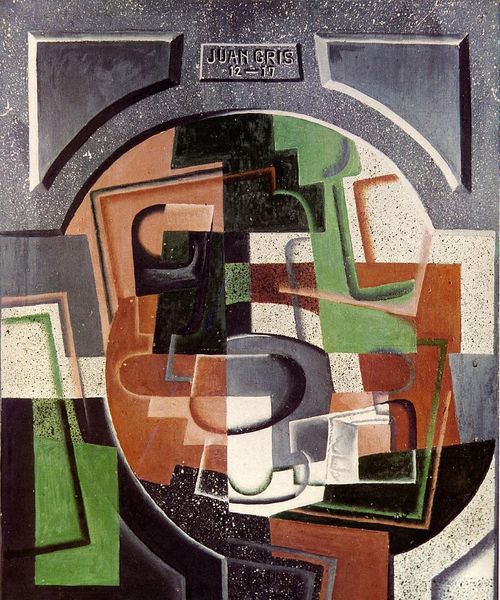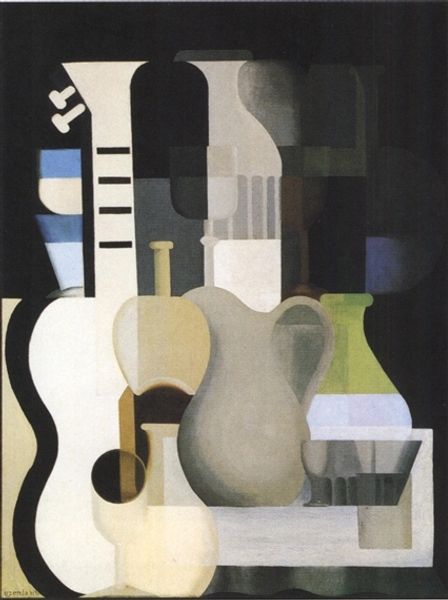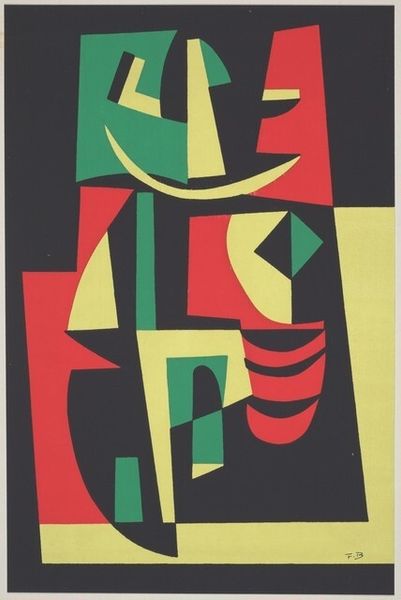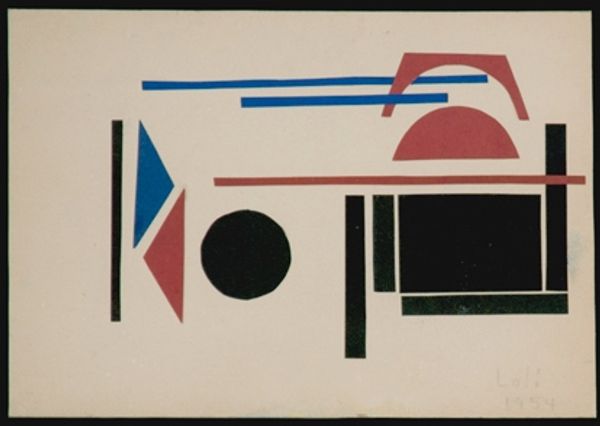
painting, oil-paint
#
cubism
#
painting
#
oil-paint
#
geometric
#
abstraction
Copyright: Fernand Leger,Fair Use
Curator: This vibrant oil painting, simply titled "Blue guitar and vase", was composed by Fernand Léger around 1926. The sharp, contrasting colors immediately command attention. Editor: I find the starkness striking. The smooth surfaces of the vase and guitar are dissected and reorganized into clean, almost architectural forms. It feels distinctly modern, playing with volume and space. Curator: Léger, deeply affected by his experience in World War I, was fascinated by machinery and industrial progress. This work embodies that, transforming ordinary objects into something resembling precisely engineered components. Editor: Yes, notice the emphasis on cylindrical and geometric shapes; it strips the guitar and vase down to their essential forms. How Léger manages to imbue such hard-edged shapes with an almost tactile presence is fascinating from a purely material perspective. I wonder how he built the textures up... Curator: Léger wanted to capture the dynamism of the modern world. He was trying to break free from traditional artistic representation, seeking a visual language fit for the industrial age. This places him within a milieu that yearned for visual change and, by virtue, social progress. Editor: Precisely! These forms may seem static at first glance, but the vibrant colours and careful arrangement generate an exciting visual tension. I almost feel a vibration coming from the blue guitar, amplified against the still life. I imagine him experimenting with industrial paint. I find it powerful how Léger transformed our idea of art’s medium. Curator: It's fascinating to consider the contemporary exhibition spaces that supported such a radical shift in artistic approach. Léger benefited from avant-garde galleries championing artists who questioned established norms, which ultimately widened art's audience and made the language of modernism intelligible. Editor: That is an excellent point. Ultimately, I leave considering the labor of its making, as well as what he considered as the labour that shaped his art subjects and times. Thank you. Curator: And I think that its presence here signals not only the shift in artistry, but a reflection of our ever changing landscape, today.
Comments
No comments
Be the first to comment and join the conversation on the ultimate creative platform.
